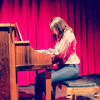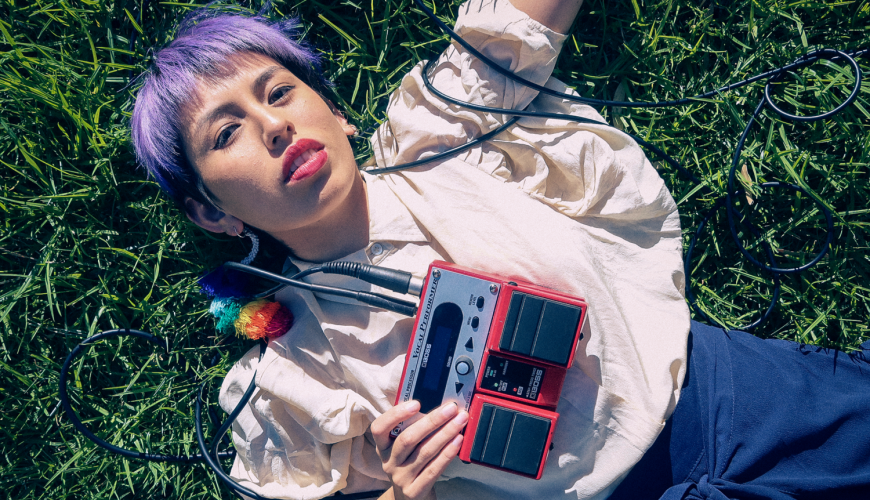
The last decade in the life of singer-songwriter, composer, and teaching artist Anaís Azul has been a whirlwind. Regardless of successes and setbacks, Azul says every moment constitutes a musician’s privilege to compose, perform, teach, study, heal, share, and establish identity through music.
Azul identifies as queer, nonbinary, and a person of color and is a Peruvian immigrant. When Mark MacNamara wrote a brief article about them (Azul uses they/them pronouns) for SF Classical Voice in 2013, Azul was a 17-year-old Berkeley High School student headed to Boston University to study composition. Ten years later, with a performer-composer MFA from CalArts, Azul has founded and performed with the band Cathartic Conundrum; composed for theater, orchestra, and chamber ensemble; and recently released the EP Vulnerable. In the Bay Area, they have been writing and performing music with lyrics in Spanish and English, teaching music to elementary school students, leading a course in music fundamentals at CalArts, and collaborating with other artists, especially artists whose practices include improvisation.
Having come to Berkeley from Lima, Peru, with their family at age 4, Azul grew up surrounded by art, largely due to the influence of their parents, the highly regarded visual artists and poets Susana Aragón and Adrian Arias. In conversation with SFCV, Azul discusses receiving a Fulbright scholarship in April 2023, their plan for applying that support during a nine-month residency in Peru, and the focus of their current work.
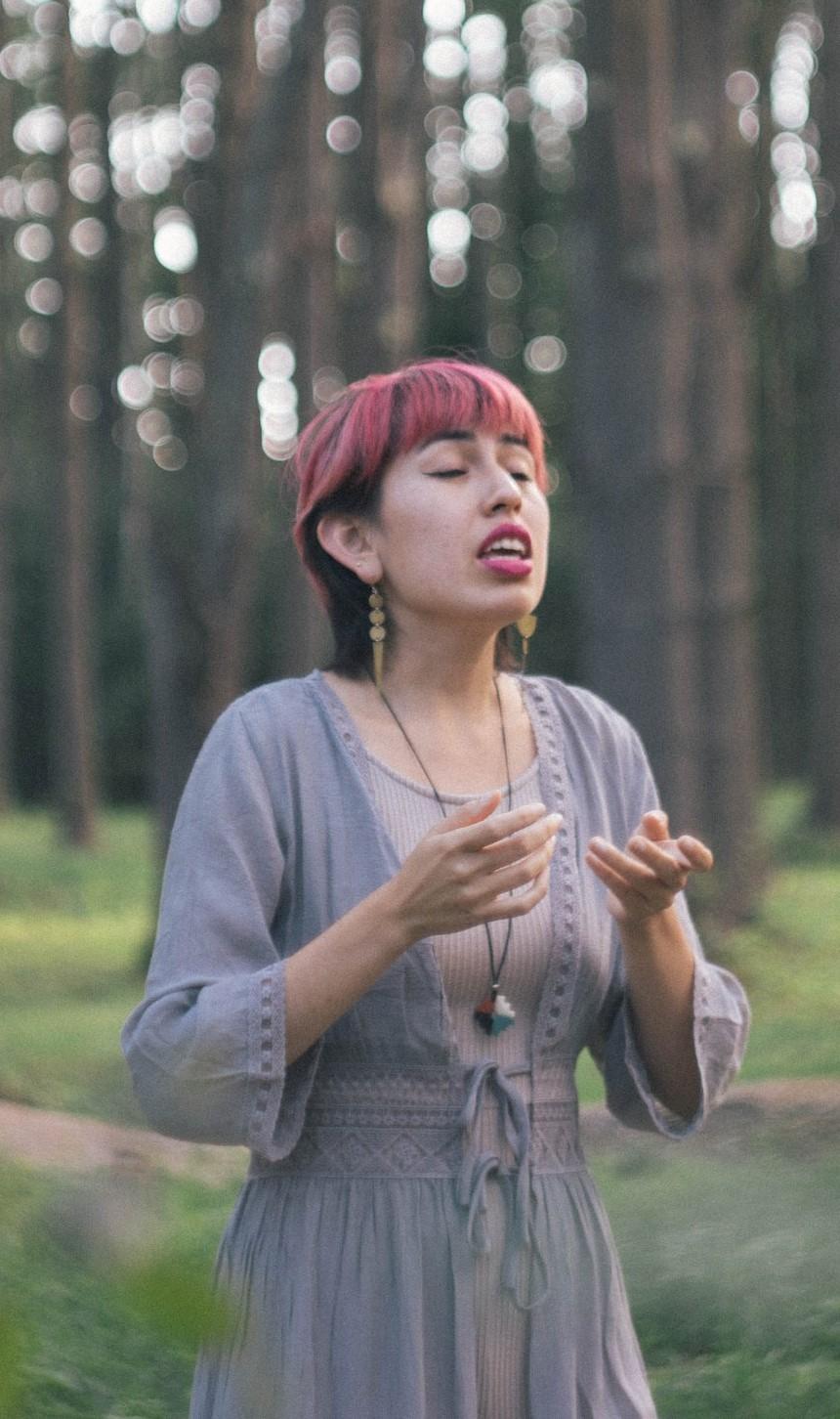
You mentioned in a published interview that your EP Vulnerable was brought into being due to your getting hit by a car. That must be an unusual origin story for a recording.
I got hit by a car in 2018. That is a fact. I was crossing in a crosswalk, and the car didn’t see me. I fractured my knee, and it was a life-changing thing. It inspired me to do a solo project, to do my work as an independent artist as opposed to in a band, which I had been doing in Cathartic Conundrums. It was a wake-up call. Why do you want to hide behind a band’s name? It’s time to put your music out there under your own name. Yes, you’re so many things, so many identities: a teacher, composer, classical composer, singer-songwriter; it’s time to hold space for all of that. The accident was a reality check.
Is there a theme or element of your lyrics that brings it all together for you as a songwriter?
All of my songs, even including the Cathartic Conundrum pieces that I’ve done, are about things I’ve experienced. They’re more than autobiographical because sometimes a story is not linear — it’s more of an emotional arc. What I always say is that my songs are spells that I write. My goal is to move through an emotion and try to get on the other side of that hard emotion. Anxiety, insecurity, anger, something I wish I could tell my friend but I can’t — it’s me searching for the words to get to the other side.
Is the same thing true of the melodies?
The melodies that come to me feel more like a spiritual, otherworldly experience. There’s nothing methodical; it’s like a download from who knows where. The singing feels ancestral to me. I’ve had incredible voice teachers throughout my life, but I also feel my singing voice has always been there and comes from somewhere that’s been around. When I improvise and write songs, it’s like it’s not even my own voice. It goes beyond what I can comprehend: My subconscious and Peruvian ancestral beings who came before me are communicating though me. That’s especially true when I’m vocalizing and not singing actual lyrics.
Do the rhythms, sounds, and shapes of words and phrases drive the melodies, tonalities, and tempos, or do you flow the other direction?
I definitely think the words inform the melody and vice versa. Songwriting doesn’t happen in one singular way for me. I have had instances where a word is not fitting right, so I’ll change a word so that it feels more true or sounds nice or feels better when you say it.
An example of that is “En Mi Cantar,” a song in Spanish. I say, “Y el amar está en mi cantar,” as opposed to “Y el amor está en mi cantar,” which means “And to love is in my song.” It’s not really grammatically correct: “Love is in my song” would be more correct. But I didn’t like the “o,” and it’s not how it came to me. When I went back to check if it made grammatical sense, it though, “No, not really,” but it feels so good to say it that way. I kept it because the sound and the feeling are understood in Spanish and the words still make emotional sense.
Please talk about the importance of the vocal looping that’s a signature feature of your compositions and live performances.
My vocal looping practice has helped me in that it allows me to repeat something until it’s sitting in my subconscious. When we repeat words to ourselves, we start believing what we say to ourselves. I say things I want to believe about myself. Hopefully, by sharing it with other people, there’s collective healing for us all. Musical tools that have helped me I hope resonate with others. I do a lot of sing-alongs in my live performances and encourage other people to cast spells for themselves too and to start believing those things about themselves.
What it really has opened up for me is space to improvise. I hadn’t been able to do that when I accompany myself with an instrument. [With vocal looping,] I don’t have to hold anything; my microphone is on a stand, and the background loops allow me to set a base so I can soar musically and explore my voice.
It opens up possibilities for improvisation and space and to feel free with my voice. It could be that I’m not as comfortable playing a physical instrument as I am with my voice, so I’m not on equal footing. Looping allows me to move my hands and my body more freely. I love that. There’s no possibility for pretension.
What other software tools are interesting to you?
In my most recent release, I do some vocal looping, and I do electronically processed charango [a small Andean stringed instrument similar to a guitar]. I have a delay pedal I’ve been running my charango through, and it’s amazing all the little sounds it can pick up. I just tap on the instrument, and it’s such a mystery.
It’s something I really got into through theater. I’ve done live music for theater and composed and improvised sound design. Creating mysterious environments in a setting that’s already fictional has allowed me to explore sounds and possibilities. Theater is a great place for play. I did a project with [the Manchester, Vermont-based] Shakespeare in the Woods last August, and I had my electronically processed charango. We were making this whole universe out of one instrument with the delay panel. Recently, for the West Coast premiere of [the play] In the Green, with [the Santa Ana-based theater company] Wayward Artist, I did vocal looping to create this sacred environment, and with the charango, I was able to do sliding glissandos that were layering on each other and felt infinite, so cool. I was also using a contact microphone. I put it on my vocal cords so it feels the vibrations and ran it through the delay pedal so you could hear echoes. It was a lot to coordinate, and I don’t do it much in my live performances. But it’s definitely influencing my writing now.
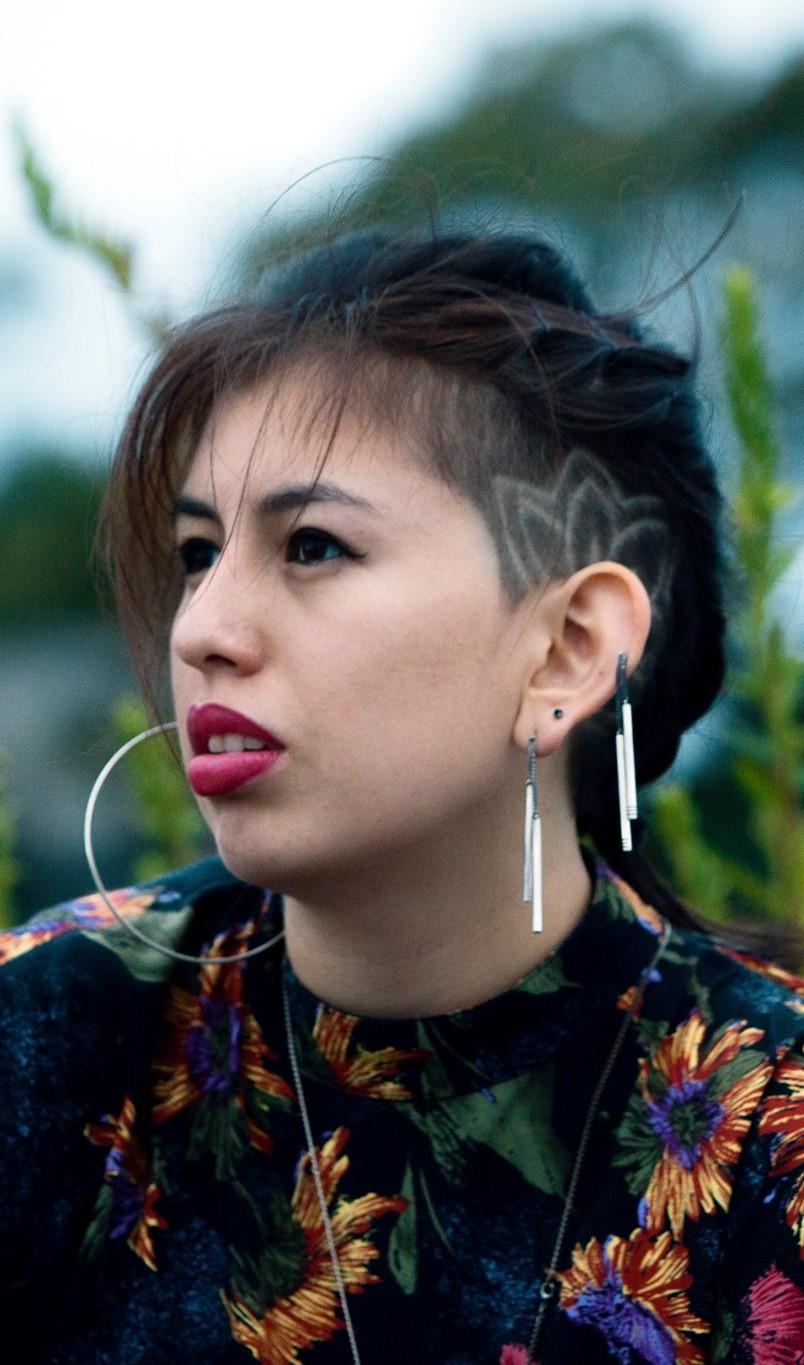
Let’s talk about your identity and storytelling with audiences and students. What are your philosophies about the personal narratives you choose to reveal or not reveal?
This does all go back to getting hit by a car and thinking, “Why wouldn’t my identity, my story, be relevant?” I’ve been reflecting on it because one of my day jobs is teaching. I just finished teaching these kids where we put on a musical, and I saw them Monday through Saturday. Yesterday, I had a moment crying, really grieving the end of our time together. Why was it so intense? Because I really showed up fully as myself. There was not a part of me I was hiding. I came out to them. I told them my pronouns were they/them. I have [fostered] a safe space for them to talk to me. I have endured transphobia from people higher up in my workplace. I’ve tolerated all of that to be the best person for the kids. It’s so worth it. If I live out loud and I am fully myself, then I show young people there’s nothing to be ashamed of. Of course, there are challenges, but there’s so much shame in the world. A lot of kids are children in immigrant families, and there are all these ways I connect with these kids. Spanish is the language they most often speak at home, and I’m bilingual. I tell them, “You’re OK the way you are. You are worthy of love.” That’s also the intention I have when I create music and I’m doing a show: I invite people to let go of shame. Shame can keep us from the healing we want to have. If I’m able to show I am flawed, I am human, I am loved, [then] I’m able to lead by example. Through my performances, I have the privilege of having a platform every time I perform. I don’t take that lightly. It’s part of the vulnerability and healing that’s at the core of why I make music.
Tell us about the Fulbright U.S. Student Program . How long will you be in Peru, and what can you say about the album of songs you intend to work on?
I got [the Fulbright scholarship] in April. I’ll be moving to Peru for a nine-month stay in August. Wow, in a way, this also connects to getting hit by a car! I wouldn’t have applied if I hadn’t gone to grad school, and the only reason I went to grad school was because I had a nice settlement after getting hit by a car. I got the settlement just as I got accepted to grad school, when I wasn’t sure if I could afford to go. Because of the $15,000, I said, “I guess I can go.”
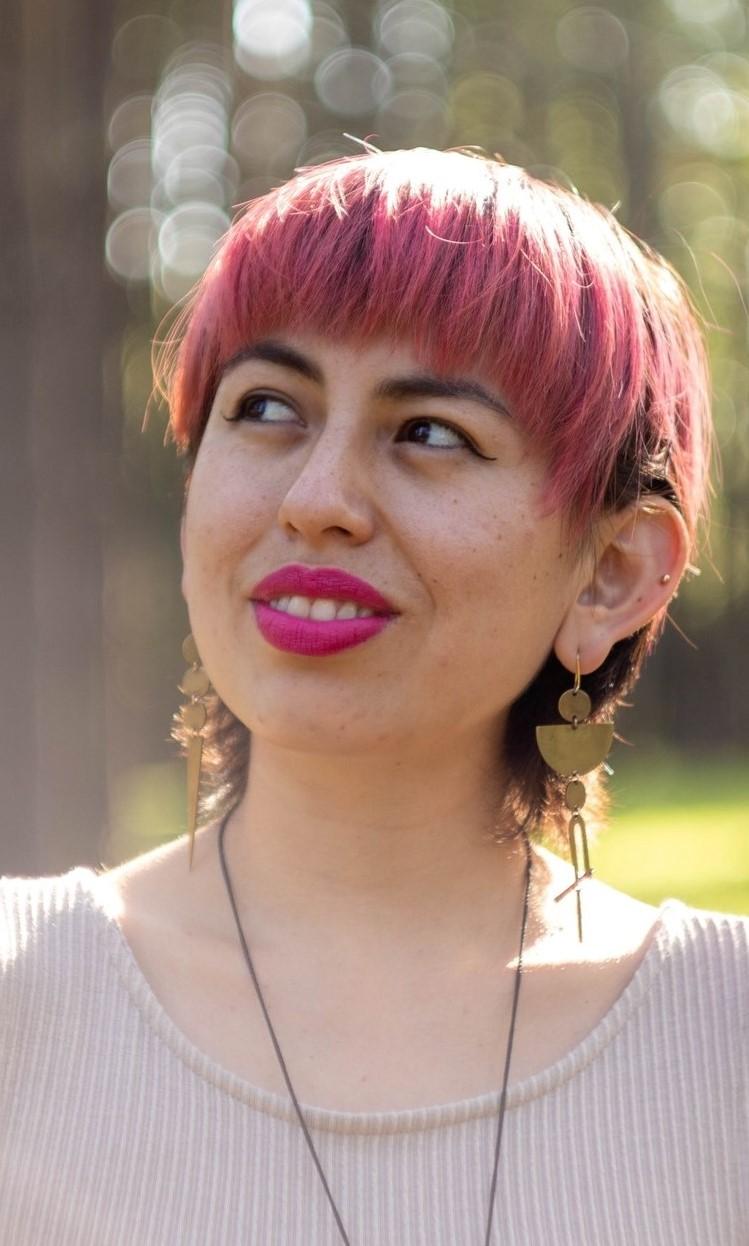
The proposal is to go to Lima, Peru, to learn Quechua, which is the Indigenous language most often spoken in Latin America, and also to study charango. I’ll be doing this study so I can make an album of 10 multilingual reinterpretations of traditional Andean songs using vocal looping and electronic practices. The looping allows me to have the various languages at the same time. The initial period of my time in Peru will be choosing the 10 songs I want to reinterpret. I will take these traditional songs and either translate into Quechua if it’s written in Spanish or, if it’s written in Quechua, into Spanish and English. I’ll then make my own versions and try to create narrative threads between all of the songs. I’m a composer, so this is an arranging project I’m excited about because in the past I’ve leaned more toward writing my own original songs and doing covers of popular songs — like “Nature Boy,” for example — that I do with vocal looping. It’s taking all my practices into this arranging world and trying to extract the most concise phrase of a song. It’s taking all these Andean songs into this multilingual, experimental world. Of course, I can’t predict the future, but the goal is those 10 songs.
You speak often about music as healing, powerful, and mystical. During this era when people in the LGBTQ community live within a heightened atmosphere of physical and emotional risk, does it alter your belief in music or change who you want to sing for or with?
It goes back to teaching and my kids and being fully who I am. I want to sing to anyone willing to listen, to receive this medicine. That’s my gut feeling: Why not sing to everyone? But I do have a directed audience. My intended audience is people who want to do the work, want to grow, want to transform themselves to be the best version of themselves they can be in their world. In the heightened times of the grand uprising in the quarantine, there were online posts about everyone having a role in the revolution. Some people are the protestors, some medics, some healers, some cooks. My role is to sing, to heal through song. So I’m not going to stop. I was put on earth to sing. Maybe I was even put on earth to teach. I want to help other people sing literally and metaphorically. Music’s power to heal is there, and it doesn’t have to be direct, like just singing songs about how to change the world. The way I move through healing is more about self-help, personal growth, emotions. Songs that encapsulate all of those things are something radical.
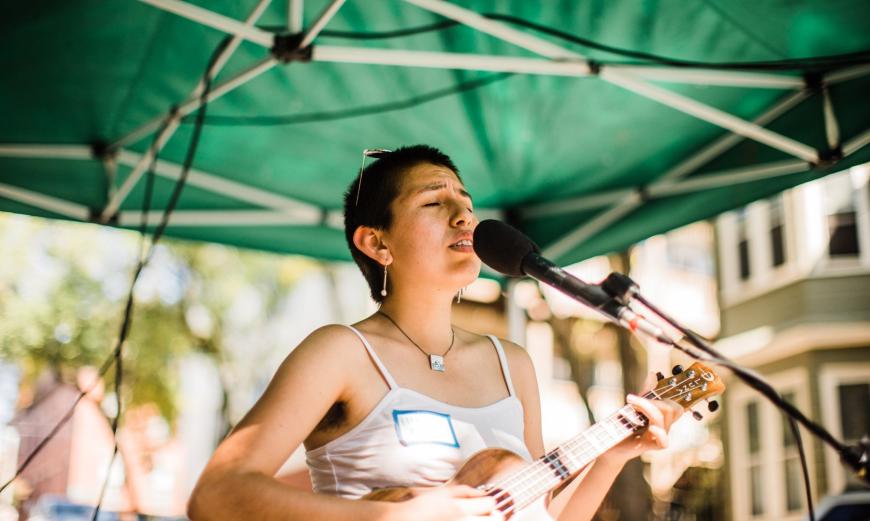
Music as resistance and as healing means love can be both. Love can be emotional healing and resistance to all hate. Queer and trans people are being silenced, being hated, so if I still have it in me to do this, I want to do it for as long as possible. I know that other queer and trans people don’t have the support system and privileges I have as an artist to generate that love.
What do you hope is still true about your music 10 years from now?
Honesty. I can hear honesty in music, although I don’t know how to pinpoint it. When music makes me cry, I think, “That is raw, it feels real.” When I sing, I try to make that come through. I hope that that love and honesty are felt through my music. Part of collective healing is really spreading love as bell hooks defined it. It’s not an elusive word. It’s not love that feels dreamy. [The author and social critic] bell hooks made love a verb, something that takes work. I put that into my music when I’m writing, recording, releasing, and performing it. I hope it’s still felt 10 years from now. When people tell me they feel seen by my music, I know my music has landed in the right hands.


